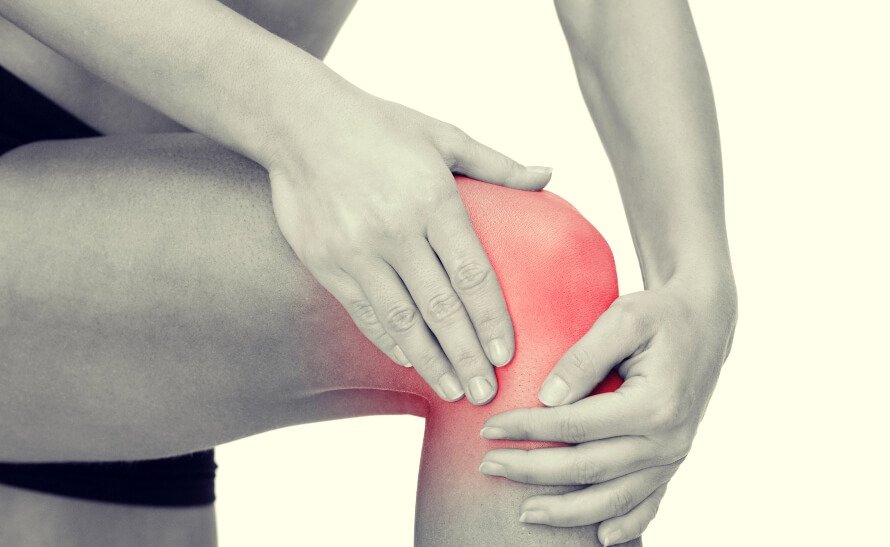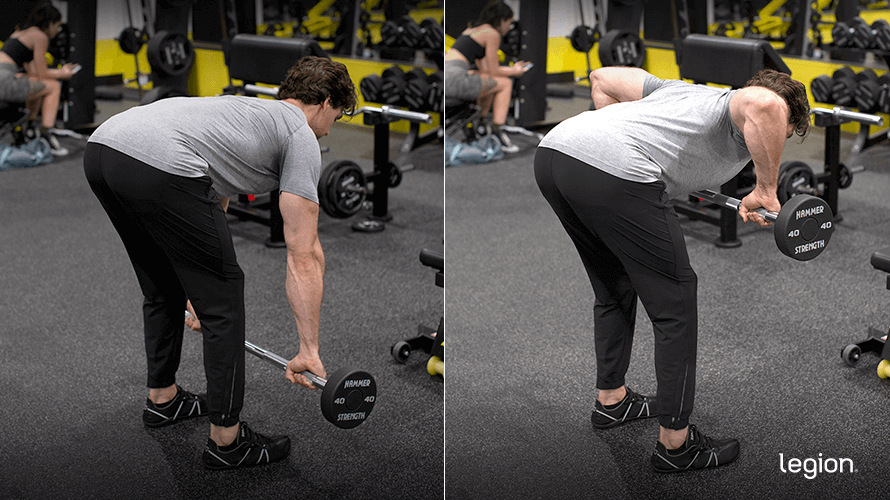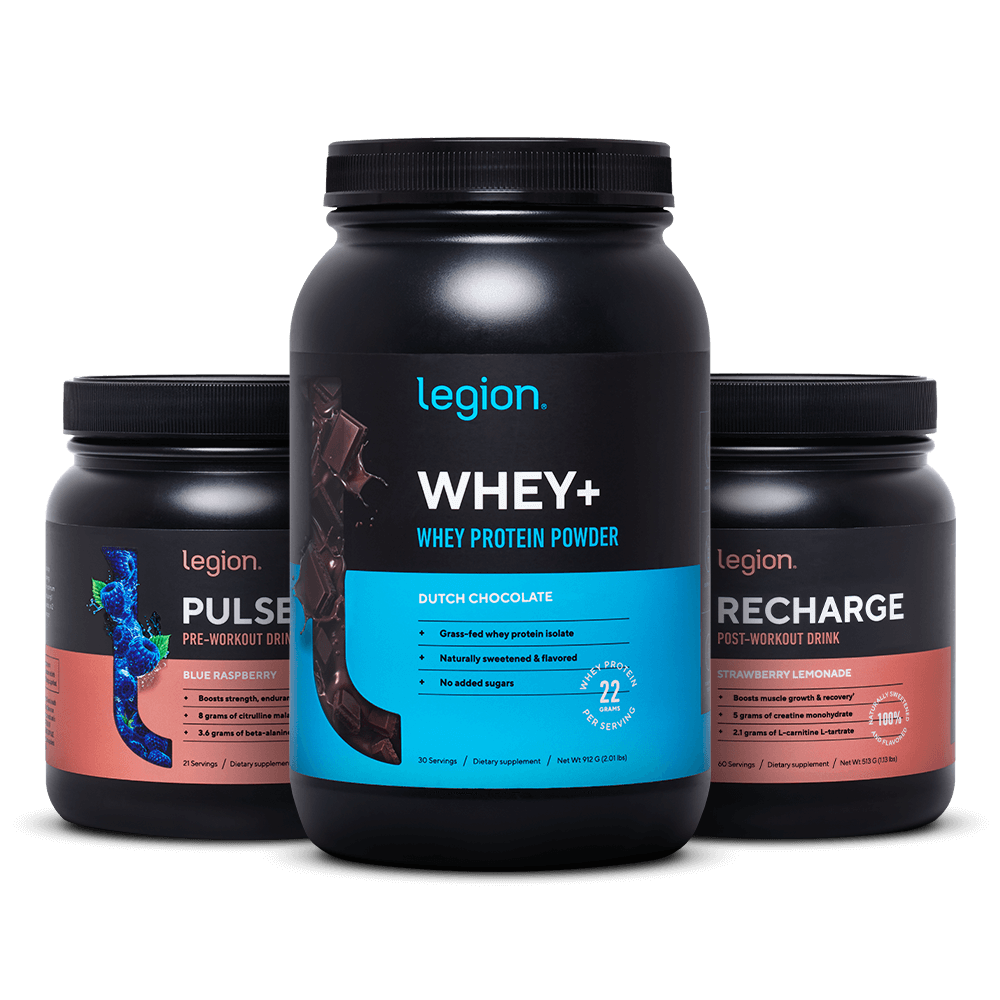[ad_1]
If you’ve been around sports or fitness for any time, you’ve probably heard of soft-tissue injuries.
Soft-tissue injuries are exactly what they sound like: Injuries to the softer tissues in the body, such as muscles, tendons, ligaments, and so forth. Everything other than bones, basically.
Unlike injuries to bones, soft-tissue injuries are more difficult to identify, which means they’re often trickier to treat. They can also be challenging to prevent since they typically happen unpredictably and suddenly or surreptitiously over weeks or months.
Fortunately, there are several evidence-based techniques you can use to minimize your risk of suffering a soft-tissue injury, and in this article you’ll learn exactly what they are.
You’ll also learn what a soft-tissue injury is, common soft-tissue injury symptoms, how they occur, tips on how to treat them, and more.
What Is a Soft-Tissue Injury?
A soft-tissue injury is any type of trauma to muscle, tendons, ligaments, or fascia.
Among people who lift weights, the number one soft-tissue injury is repetitive soft-tissue injuries, specifically, one referred to as tendinopathy, which involves a degradation of the collagen proteins in the tendon.
Another soft-tissue injury that plagues many runners and basketball, soccer, tennis, golf, and football players is bursitis, which is inflammation of the bursas—little fatty pads of tissue between joints. This is a particularly common hip and knee soft-tissue injury.
Tendon and ligament strains are also common in all athletes, which are essentially minor tears in the connective tissue. The difference between strains and outright tears is generally the severity of the injury and how long it takes to resolve.
Strains can be very painful, but they generally heal on their own without surgery, whereas tears often require surgery to fix. Strains are very common in any kind of ballistic, fast-moving sport, such as martial arts, soccer, basketball, football, lacrosse, and tennis.
What Are Common Soft-Tissue Injury Symptoms?
The most common symptoms of soft-tissue injuries include:
- Pain
- Swelling
- Stiffness
- Bruising
- Instability (especially in weight-bearing joints such as the hips, knees, or ankles)
How Do Soft-Tissue Injuries Occur?
Broadly speaking, there are two kinds of soft-tissue injuries: traumatic and repetitive.
Traumatic injuries occur as a result of sudden trauma, such as an unexpected fall or impact to the body. Examples include sprains, strains, and even concussions (which are a kind of soft-tissue injury to the brain).
Although traumatic injuries tend to be the most dramatic, they aren’t as common as repetitive soft-tissue injuries. Repetitive soft-tissue injuries occur when a tissue undergoes more damage than it can heal from over a period of time, generally several weeks or months.
Just like muscles, your tendons, ligaments, and bursa undergo microscopic damage when you work out, and if you accrue damage faster than your body can repair it, you can wind up with repetitive stress injuries.
The ultimate cause of all repetitive soft-tissue injuries is simply doing too much too soon. This can occur when you push too long or hard in your workouts, although most people tend to make the latter mistake. This is particularly true among endurance athletes, who are often dogged by overuse injuries after bumping up their workout volume too fast.
Weightlifters, mixed-sport athletes, and martial artists typically take things too far in the other direction, stacking too many intense workouts back-to-back-to-back over several days or weeks until their body cries uncle.
Do Strengthening Exercises Prevent Soft-Tissue Injuries?
There’s very little direct evidence that you can strengthen tendons and ligaments with special exercises.
For example, you’ll often hear that runners should do side lying clamshell exercises to strengthen their iliotibial bands (a large strip of connective tissue on the outside of your thigh). However, it’s hard to see how this could reduce the risk of injury since it’s nearly impossible to strain the iliotibial band, and most injuries in runners are due to overuse, not sprains or tears arising from weak connective tissue.
That said, there’s a strong theoretical argument for using resistance training to strengthen your entire body, and the best exercises for this are the same ones you’d use for strengthening your muscles: compound exercises like the squat, bench press, deadlift, and overhead press that train many different muscles at once and also improve your balance, flexibility, and coordination.
(And even if resistance training doesn’t reduce your risk of injuries, you’ll enjoy many other benefits like increased muscle mass, increased insulin sensitivity and metabolic rate, and so on.)
The Best Ways To Prevent Soft-Tissue Injuries
How to Prevent Traumatic Injuries
Traumatic injuries are generally unpredictable and thus inherently difficult to avoid. That said, there’s some evidence that you can slightly reduce your risk of suffering a traumatic injury in a sports setting by warming up.
Dynamic warm-ups that mimic the movements you’ll do in your workouts also tend to work best. A few examples of dynamic warm-ups would be jumping and light jogging before a running workout, or bodyweight squats and leg swings before squats. (Note that this is very different from what most people do to warm up, which usually involves lots of static stretching.)
How to Prevent Repetitive Injuries
The only reliable way to reduce your risk of repetitive injuries is through proper workout programming. Specifically, I recommend most people include at least one day of no intense training whatsoever per week, and ideally, two.
(And if you’d like specific advice about which training program you should follow to reach your health and fitness goals, take the Legion Strength Training Quiz, and in less than a minute, you’ll know the perfect strength training program for maximizing your progress and minimizing your risk of injury. Click here to check it out.)
Another good rule of thumb for most athletes is to not increase your workout volume more than about 10% per week.
For example, if you ran 10 miles last week, you’d want to run no more than 11 miles this week. Measuring volume can be tricky with some sports like soccer, basketball, or martial arts, but the general idea is to not make big jumps in your total workload from week to week. When in doubt, err on the side of smaller increases rather than bigger ones.
Finally, I recommend you take a deload every ~4-to-8 weeks of training, which involves significantly reducing your volume and intensity to give your body (and mind) a break from vigorous training.
Aside from proper workout programming, getting enough sleep is also of paramount importance. For instance, a study published in the journal Current Sports Medicine Reports found that injury risk shoots up when you consistently get less than 7 hours of sleep per night, and increases 1.7 fold if you maintain this level of sleep for more than 2 weeks.
If you want to maximize your chances of staying injury-free, research also shows that there are supplements that help you maintain good joint health and mobility. Specifically:
- Undenatured Type II Collagen: Studies show that undenatured collagen regulates the immune response that inflames joints and destroys cartilage and bone, even in people with healthy joints.
- Curcumin: Curcumin inhibits a pro-inflammatory enzyme known as cyclooxygenase (COX), and that’s why research shows it reduces inflammation in the joints, relieves pain and stiffness, and improves mobility.
- Boswellia serrata: Boswellia serrata reduces joint inflammation and pain, as well as inhibits an autoimmune response that eats away at joint cartilage and eventually contributes to arthritis.
- Vitamin C: Studies show that vitamin C is effective at decreasing the risk of developing and treating Complex Regional Pain Syndrome (CRPS), which is a difficult-to-diagnose form of chronic pain that typically develops after an injury.
And if you want a 100% natural joint support supplement that includes clinically effective doses of undenatured type II collagen, curcumin, Boswellia serrata, and vitamin C, as well as two other ingredients designed to reduce joint pain and inflammation and improve joint cartilage and bone health and mobility and function, try Fortify.
(Or if you aren’t sure if Fortify is right for you or if another supplement might be a better fit for your budget, circumstances, and goals, then take the Legion Supplement Finder Quiz! In less than a minute, it’ll tell you exactly what supplements are right for you. Click here to check it out.)
The Best Soft-Tissue Injury Treatments
Soft-tissue injuries generally heal without special treatment, though you can accelerate the process by following these steps:
- Protect: In the first 24-to-72 hours after suffering a soft-tissue injury, avoid activities that might aggravate the affected area. For instance, if you suffer a shoulder soft-tissue injury, try not to lift anything with the affected arm or hold it in positions that make it ache (such as typing). In more severe cases, you may benefit from using crutches or a sling to protect a damaged limb.
- Rest: It’s important to move the injured area regularly to stop it becoming stiff and uncomfortable, but you should avoid any movements that cause pain or strenuous activity that might worsen your injury. For example, don’t run on an injured leg until you can walk on it without pain.
- Ice, Elevation, and Compression: Research suggests that icing a soft-tissue injury may help you manage pain in the first few days, but if you’re already taking pain medication or you aren’t in any discomfort at rest, icing your injury has no discernible benefit. Basically, icing may help reduce pain slightly, but won’t help most soft-tissue injuries heal faster.
There’s little evidence that elevating a soft-tissue injury or wearing a compression garment on the affected area aids recovery, but it won’t worsen your injury and it may make you feel subjectively better.
FAQ #1: Does it take longer to recover from a soft-tissue injury than a broken bone?
Sometimes, and there are a few reasons soft-tissue injuries tend to be so stubborn.
First, they generally begin gradually, starting out as an infrequent, dull ache or pain that comes and goes without rhyme or reason. For instance, your shoulder might hurt when you’re washing dishes but not when you’re bench pressing. Thus, many people tend to wink at these early warning signs while unwittingly digging themselves further into a hole by continuing to train.
Second, connective tissues such as tendons and ligaments tend to get less blood flow than other tissues in the body, which makes them heal slowly compared to muscle tissue. Thus, even if you do “everything right,” soft-tissue injuries tend to take their time to heal.
Third, even when people realize they have a soft-tissue injury, they often carry on with their program and whistle past the graveyard, hoping it gets better with time. Although this can happen in rare circumstances (generally when the injury is very minor), more often than not it just gets worse and worse until it hurts badly enough that they’re forced to stop training.
Unlike a broken bone, where you can often see neat pictures showing the damage and the rate of healing, soft-tissue injuries are difficult to diagnose and categorize and often heal slowly and irregularly (feeling better one week and worse the next), which leads many people to take them less seriously and not rest them sufficiently.
In other words, most people don’t rest soft-tissue injuries as effectively as they do broken bones, which delays their recovery.
FAQ #2: Once you’ve had a soft-tissue injury, are you more susceptible to another in the future?
Not necessarily—it depends on the kind of soft-tissue injury.
If you have a mild case of patellar tendinopathy (a degradation of the tendon connected to your kneecap, which is common in runners), for instance, and you rest it sufficiently, there’s very little evidence that you sustained any permanent damage or that the affected tendon is somehow more likely to get reinjured. If you rip your hamstrings off the bone and require surgery to reconnect it, though, then the tendon may not be as strong as it was before, which could increase your risk of tearing it again.
Part of the reason people believe one soft-tissue injury begets another is that it was once thought that tendons simply didn’t heal, but modern science has largely debunked this idea. Tendons do heal and grow stronger over time (which is one of the reasons weightlifting is good for your joints), but they do so slower than most other tissues in the body.
On that point, though, I do think this makes a strong case for following a weightlifting program that trains your entire body, regardless of your sport. More durable tendons and ligaments can withstand more stress before they become injured, and the best way to strengthen these tissues is to lift weights.
(And again, if you’d like specific advice about which strength training program you should follow to reach your health and fitness goals, take the Legion Strength Training Quiz.)
FAQ #3: What’s the best strength training program for preventing soft-tissue injuries?
No strength training program can protect you from soft-tissue injuries entirely.
Still, you can minimize your risk by regularly performing exercises that allow you to lift heavy weights safely and get progressively stronger over time.
And if you’d like a strength training program that includes all of the best compound exercises and the right number of weekly sets to help you strengthen your entire body without wearing yourself to a frazzle, check out my best-selling fitness books Bigger Leaner Stronger for men, and Thinner Leaner Stronger for women.
[ad_2]
Source link



